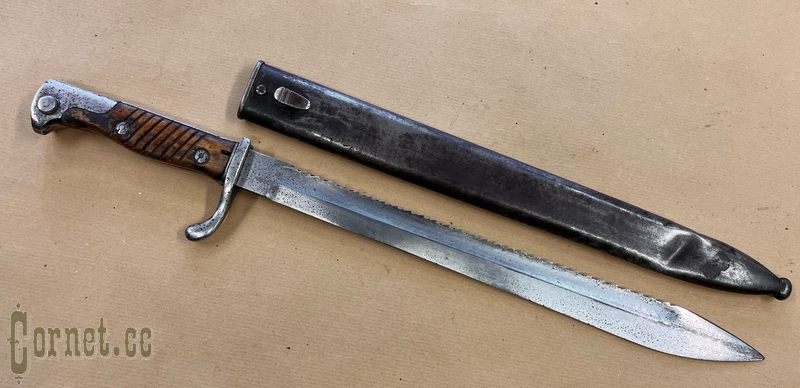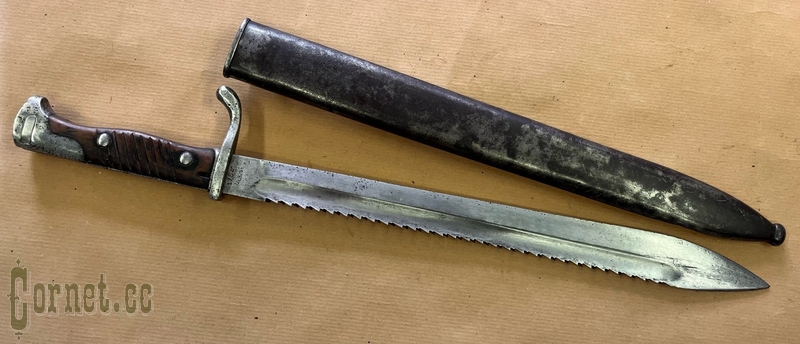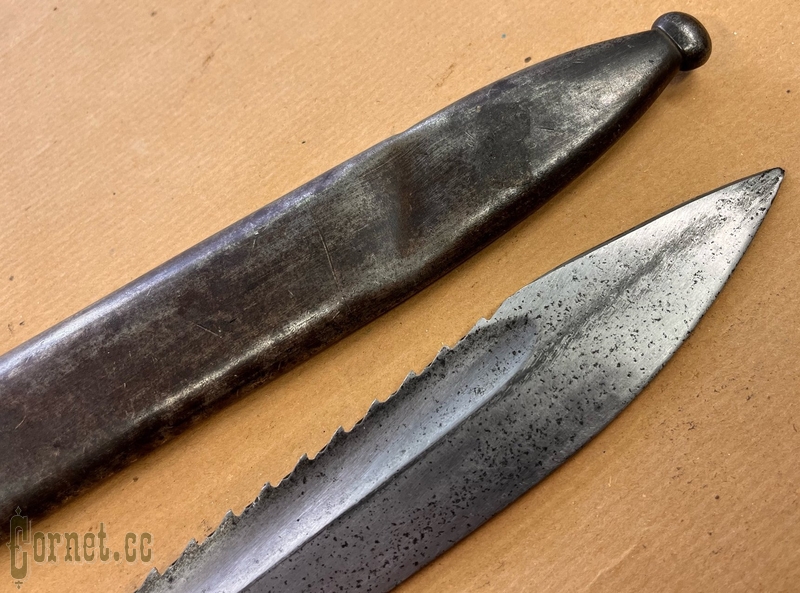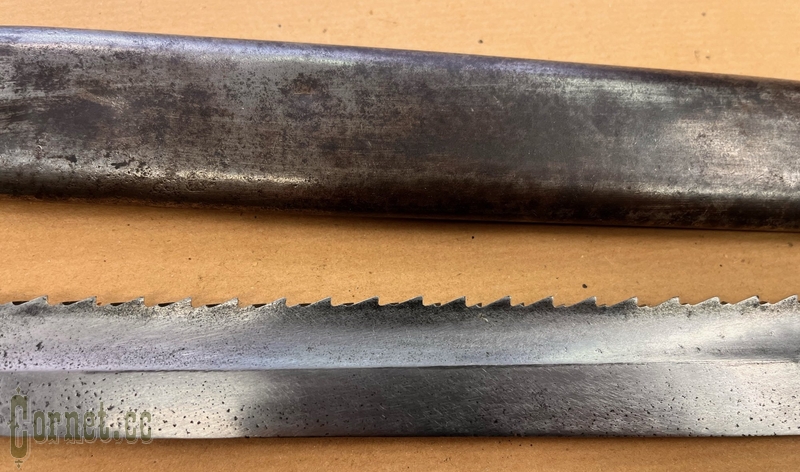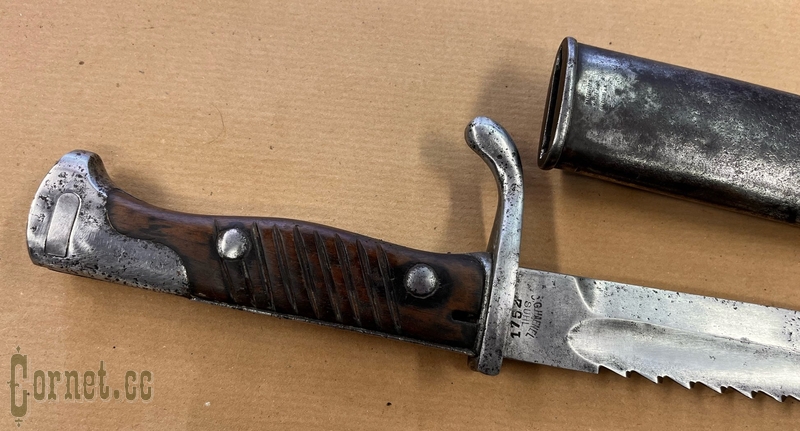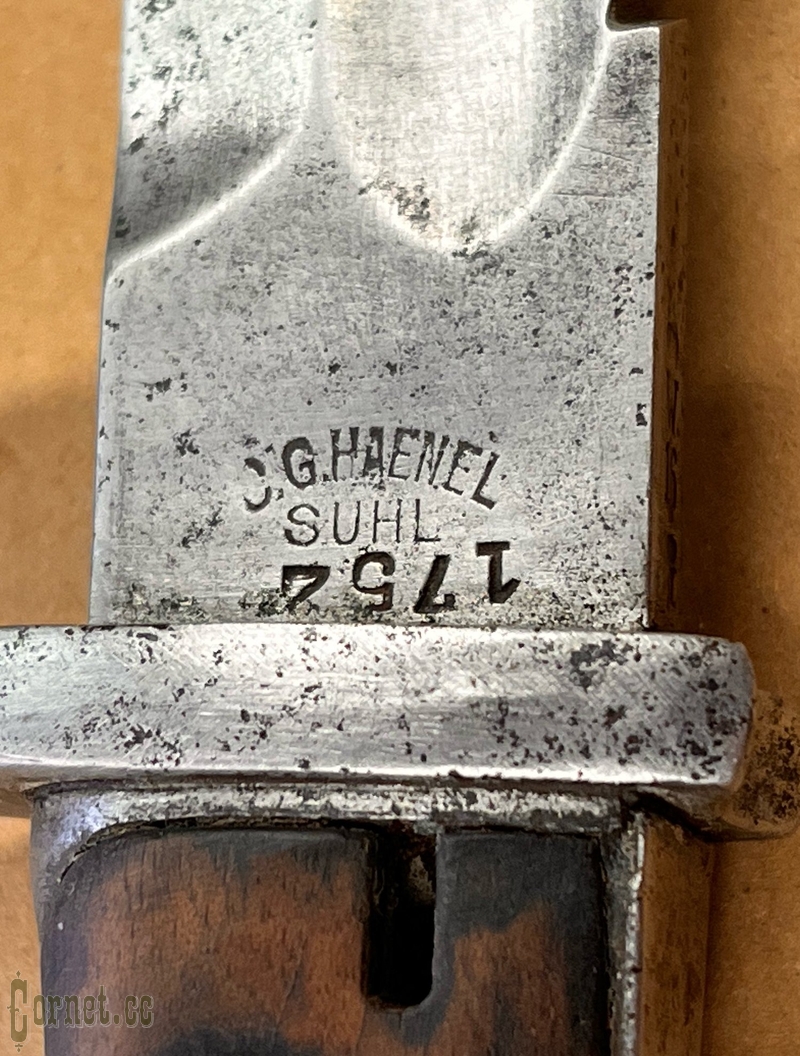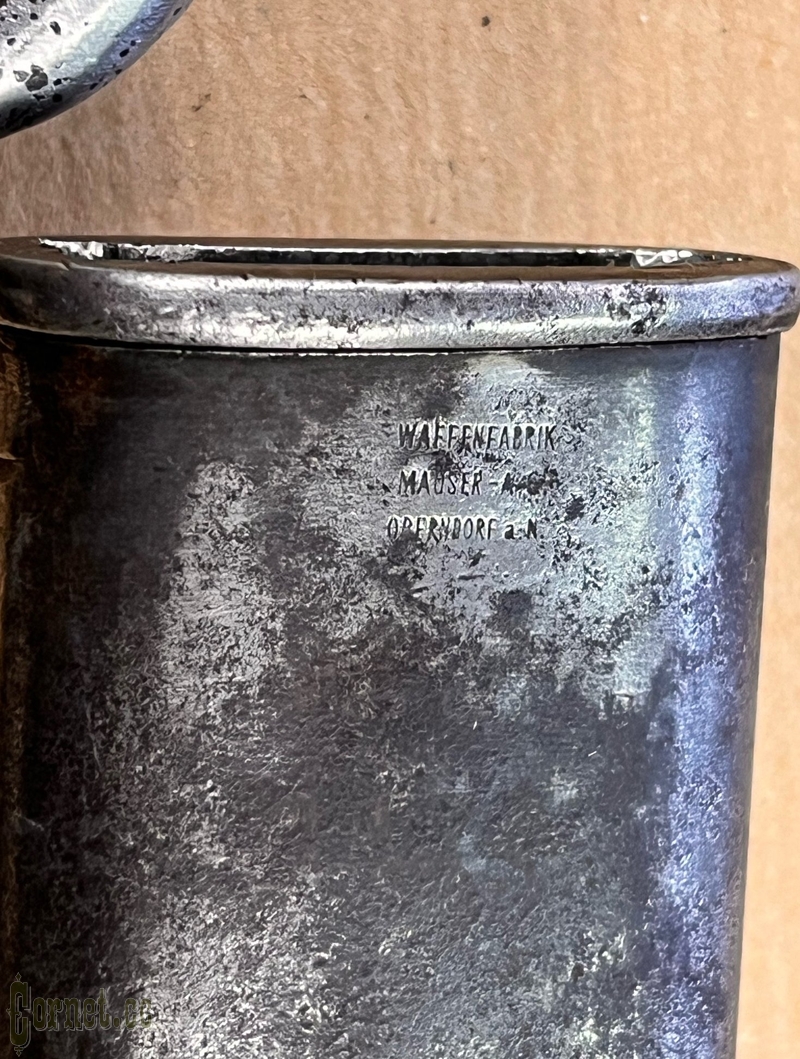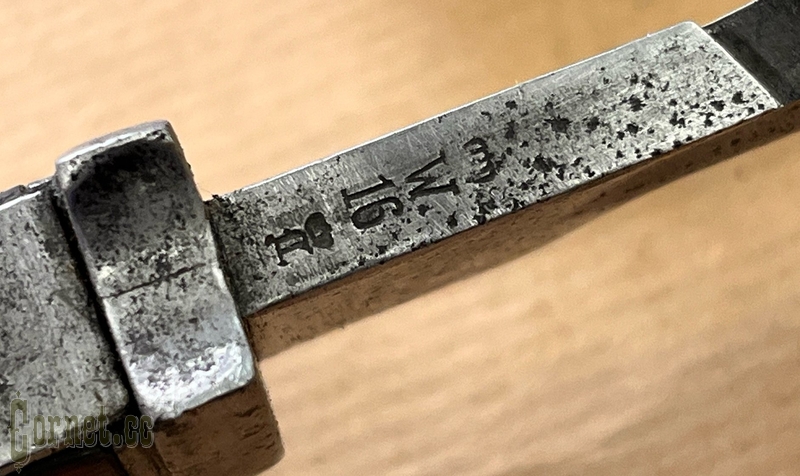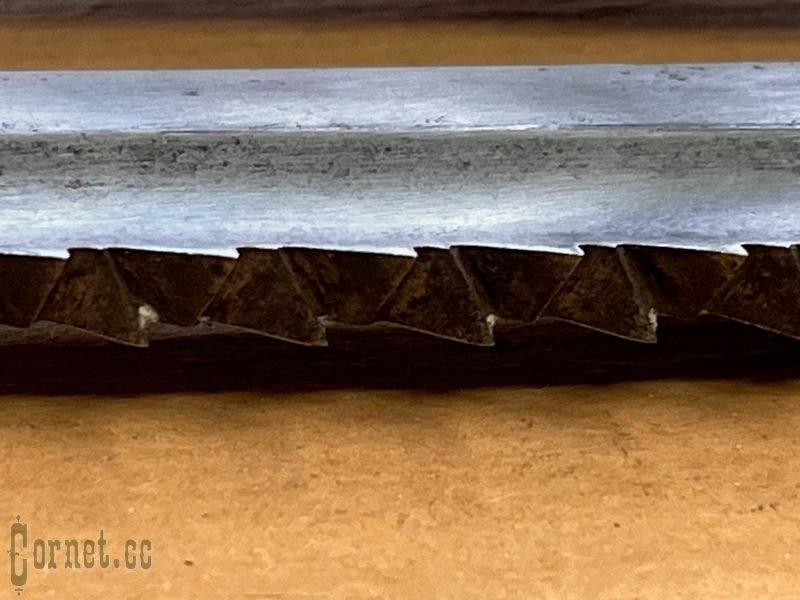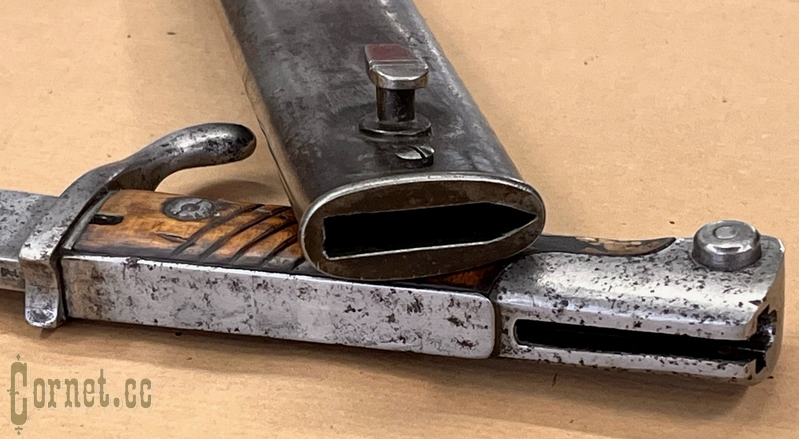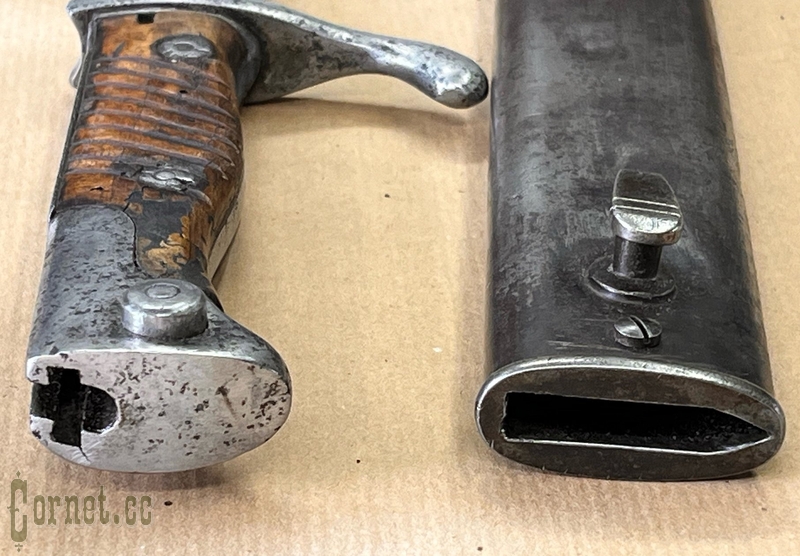№122644 Bayonet of the 1898/1905 model with a saw
Germany. A pioner bayonet of the 1898/1905 model with a saw for rifles and carbines of the Mauser system.
A type of bayonet of the 1898/1905 model. It differs from the basic model by the presence of a saw on the butt of the blade. According to the regulations, the sapper bayonet was supplied to sapper units and railway troops, and also accounted for 6% of the bayonets in infantry units. Traditionally, in the infantry, it was mostly (but not always) issued to non-commissioned officers.
The blade of the bayonet is single-edged, with a dale on both sides, an extension in the lower third and a saw on the butt. The combat end is double-edged. The handle is formed by two wooden cheeks fastened to the shank with two screws. The hole for cleaning the groove in the handle is rectangular, located in the cheeks of the handle, next to the crosspiece. The handle head has a T-shaped groove with cylindrical expansion and a spring latch with an internal spiral spring arrangement. A crosspiece with the end bent back. The scabbard is leather with an iron device consisting of a mouth with a hook and a tip with a ball at the end or iron with a hook and a ball at the end. The manufacturer is C. G. Haenel Suhl. The year of manufacture is 1916.
The total length is 501 mm. The length of the blade is 368 mm.
sold



